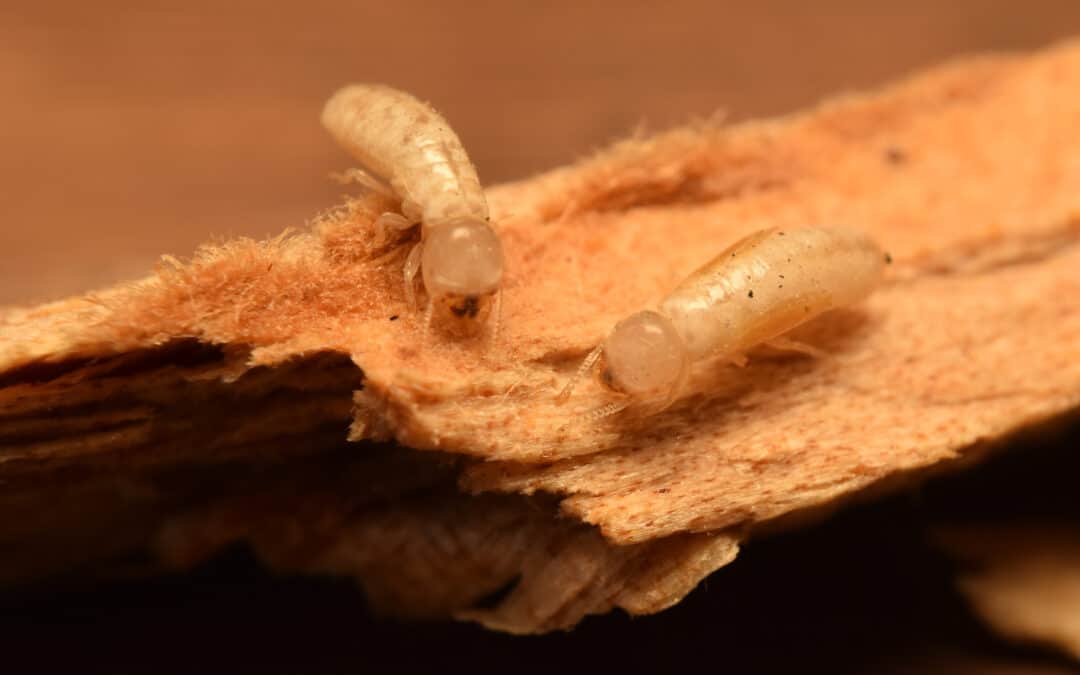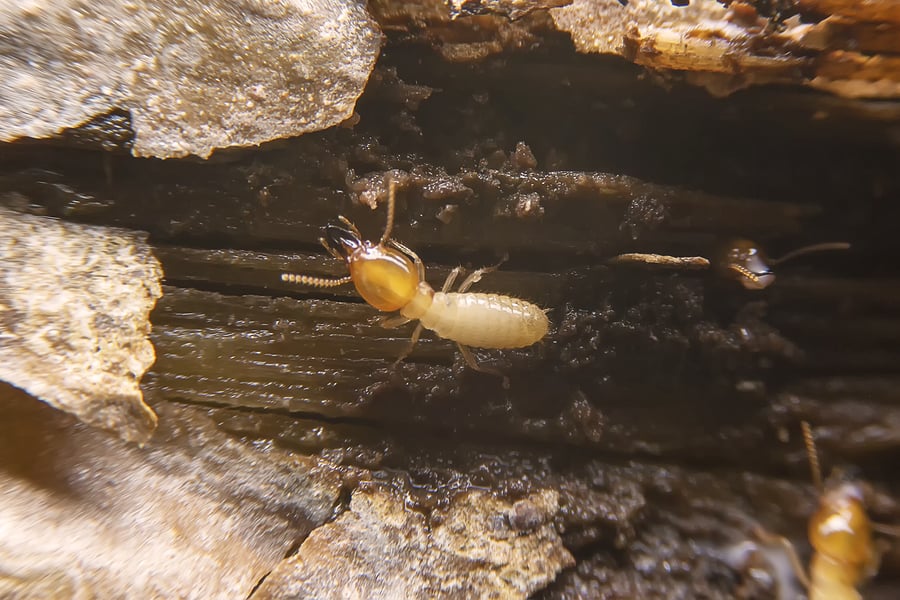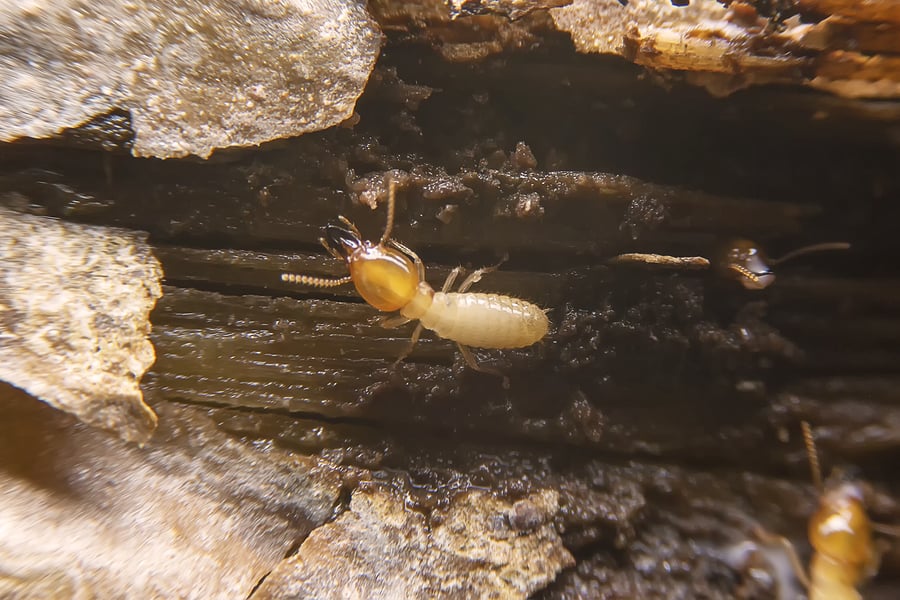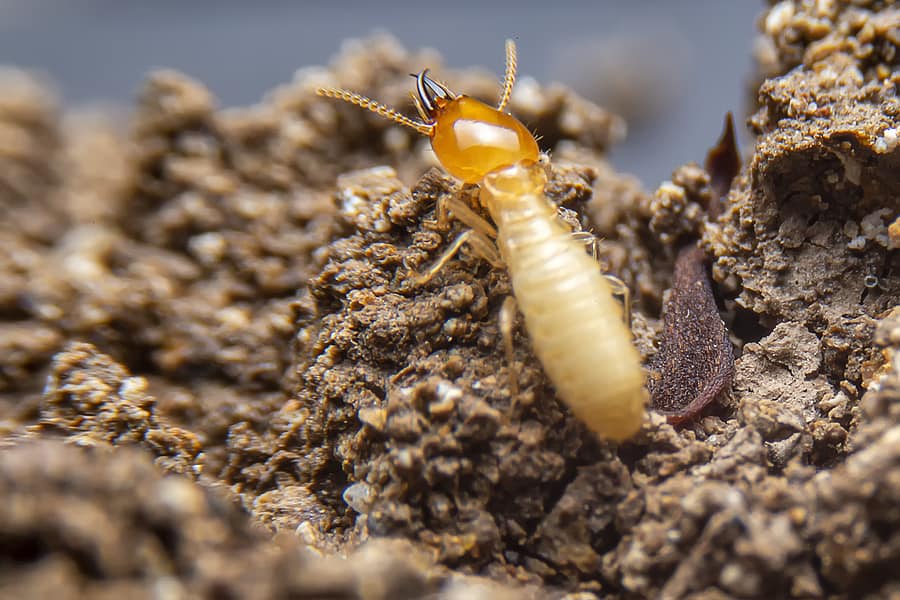READY TO GET STARTED?
REQUEST A FREE ESTIMATE
Fill out the form below or call (888) 466-7849 for a free, no-obligation estimate.

Being ready for termites is your first step in preventing them. Termites can go undetected for long periods, creating extreme damage to the structural integrity of your home. In Tennessee, the most common termite species you’ll find include subterranean termites and drywood termites. The type of termite treatment option you need for a termite infestation will depend on your situation, its location, and the type of termite you have. Check out the most common termite treatments in your area below!
Performed in new construction homes, this treatment is utilized during the building phase of a home. Pretreatments are a combination of liquid termiticide, termite bait, lumber treatment, and in-soil barriers. These treatments are known to be effective and affordable when performed before the physical infrastructure or addition is laid.
Bait stations are placed in the ground and around your home to protect against termites. These stations contain wood, paper, or cellulose that has termiticide. Once termites reach the bait station, they eat the slow-acting termiticide, which allows termites to bring it to their colony and spread it, killing off the entire colony. This treatment is best used in locations where surface treatments will not work, including near foundation drains and areas covered by slabs or flooring.
This long-term treatment gets its name from the literal barrier in the ground between the termites and your home. A barrier treatment is performed by digging a trench around the perimeter of your home and then treated with termiticide. The trench is then refilled with the treated soil to help deter termites away from your home. Sometimes, a physical wall can be built inside the outer wall of the trench, made up of rock, sand, mesh, and plastic. The wall can add another layer of protection between your home and termites.
One of the most common termite treatments is liquid treatment. This option is effective when termites are in the interior of your home. The first step in the treatment is performed by drilling holes in the foundation and wood. Then, the termiticide is injected into the holes that will force termites to emerge. After emerging, the termites will be eliminated by spot treatments with termiticides.
The last thing you want to deal with is a termite infestation, as they can be difficult to get rid of once they’re inside. Consider reaching out to your local termite and pest control company for a termite inspection. These professionals will recommend the best prevention plan to avoid termites in the future. Likewise, if you suspect you have a termite infestation, they will identify the type of termite you have and provide the best termite control option for your situation.

Owning a home is a huge investment and can take plenty of time and energy to maintain the upkeep. Whether it’s your first home or a home you’ve had for years, discovering that it has termites can be unexpected and devastating. Subterranean termites can cause considerable damage to your home’s infrastructure and the cost of repairing it can be in the thousands of dollars. There are two major reasons termites are attracted to your home.
Subterranean termites are attracted to moisture and need an abundant source of it to survive. Improper drainage around the home can often be the major and most common reason these pests have infested. Clogged gutters can cause water to pool up and cause damage to your foundation, making it vulnerable to termite damage. Leaves, twigs, and other debris that fall into gutters can build up, while the excess moisture can soften your roof and cause it to rot. Try to divert rainwater away from your foundation with a down-spot and splash blocks to help prevent the water from pooling. Consider investing in gutter guards to help keep debris and leaves out of your gutters.
Every homeowner is looking to make their home aesthetically beautiful; but often the materials used throughout your yard for landscaping purposes can attract termites. Mulch is commonly used near and around the home, sometimes lying against the foundation. Unfortunately, this material is a major attractant to termites as it can serve as a food source if it retains moisture. Mulch placed near the foundation can lead to these pests residing right at the edge of your home. Instead of mulch, consider using landscaping rocks, or try to minimize the use of wood mulch and keep it at least 15 inches from the foundation.
If you suspect a termite infestation or would like to get ahead of preventing them, consider contacting your local pest control company where they can provide you with the best termite control options for your home.

Buying a home is a major investment and, for most homeowners, a lot of time is spent repairing and renovating their house to their liking. Home ownership can also bring unexpected problems that can be costly to repair, such as a subterranean termite infestation. Subterranean termites are known to cause considerable damage by building tunnels to reach food sources. Termites can colonize homes and cause significant undetected destruction over a long period of time. The cost to repair the damage can be in the thousands of dollars. Unfortunately, termite infestations can sometime be caused by the homeowner!
Improper Drainage
Having improper drainage around your home is one of the most common reasons why termites have infested. Subterranean termites are attracted to moisture and need an abundant source of nearby water to survive. Clogged gutters can cause water to pool and make insulation vulnerable to termites. Leaves, twigs, and other debris can build up in the home’s gutters, while the excess moisture can soften your roof and cause it to rot. Try to divert rainwater away from your foundation with a down-spout and by having splash blocks that will prevent water from pooling.
Wood Mulch
Landscaping and crafting a beautiful yard come with having a home, though, sometimes the type of materials used to landscape is attracting termites. Mulch is often used near and around the house, usually against the foundation. Unfortunately, mulch can serve as a source of food for termites as they retain moisture, attracting these pests right to the edge of your home. Try to minimize the use of wood mulch and keep it at least 15 inches from the foundation.
Moisture
Lack of airflow and leaking pipes all contribute to moisture problems in the home and can create conditions beneficial to termites. Eliminating any type of excess moisture inside the home is a major step in preventing termites from infesting. Consider enclosing your crawlspace to not only prevent these termites and other pests but also improve the overall health of your home by reducing the moisture, decreasing humidity, lowering utility bills, and preventing mold and wood rot.
If you have taken these necessary steps in preventing termites but suspect that you might have a termite problem, consider calling your local pest control company to help. They will set you up with a termite inspection and a treatment and prevention plan.

Termites cause costly and considerable damage to homes and property each year. These pests are known to go undetected for some time, making it more challenging to eliminate them. It’s necessary to know the warning signs of termites and how to prevent them from infesting your home.
Termites need water to survive. They will seek moist, wet areas inside or around your home to build a new colony site and utilize the water to survive. Eliminating unnecessary moisture both inside and outside of your home is a great start to termite prevention. Storm drains should always be directed away from your house, draining at least a few feet from the foundation. Inside, ensure that there are no leaky faucets or water pipes. If there are leaks, fix them as soon as possible. If your home has a crawlspace, consider investing in a crawlspace enclosure which will help eliminate moisture under the house while also preventing mold, wood rot, and other pests.
In addition to searching for water, termites also search for wood. If there is any exposed wood around your house that is easily accessible to termites, they will find it and destroy it. Reducing soil-to-wood contact around your home is essential in preventing them. Get rid of any lumber, mulch, plants, or other wood items that are around your foundation. If you do want to use mulch for landscape purposes, keep at least a 4-inch barrier between the mulch and the side of your home. Always clean up and get rid of fallen branches, dead wood, or old tree stumps throughout your property.
Termites can be extremely difficult to detect, prevent, and eliminate once they are established. If you suspect or discover that you have a termite problem, or even want to get ahead of the prevention game, contact a professional pest control company who can set you up with annual termite inspections and even a termite control plan.